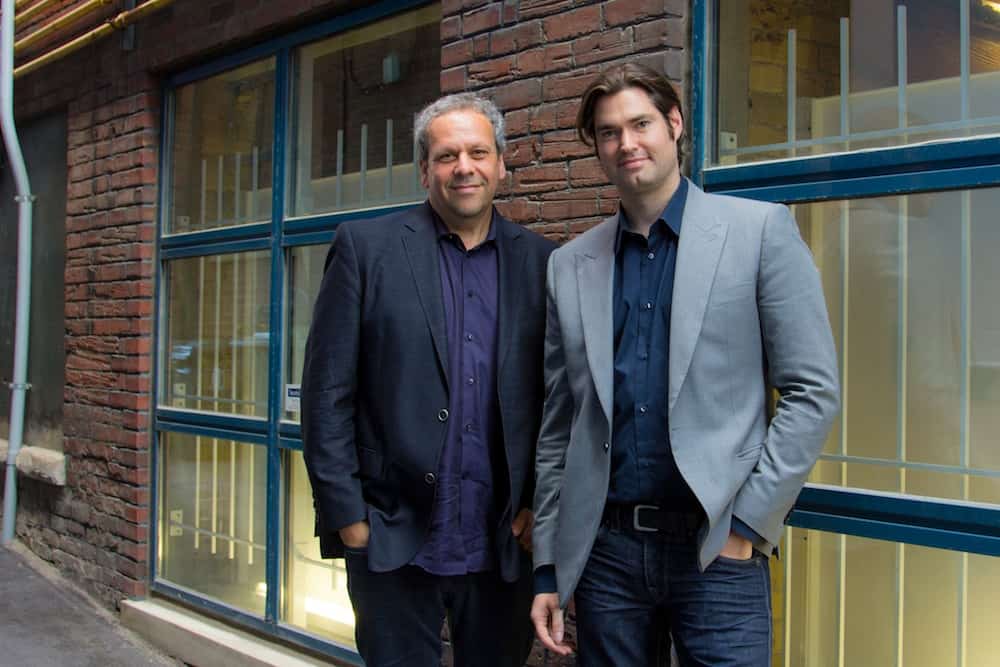When six American embassy workers narrowly escaped being captured by rebel students in the 1979 Islamic revolution in Iran, Canada was quick and eager to lend a hand. Former Canadian ambassador to Iran, Ken Taylor with the help of his wife and various Canadian embassy workers harboured the escapees and provided false documentation, identities, and alibis in order to sneak the Americans out of Iran. Those who watched last year’s Oscar winning Argo should be familiar with the plot; however, as with all Hollywood movies, entertainment — which blurs the lines between fact and fiction — is the goal.
Our Man in Tehran reveals the monumental role Canada and Ken Taylor played in the rescue plot of the Iranian Hostage Crisis of 1979. Co-Directors Drew Taylor (no relation to Ken) and Larry Weinstein depict the untold story behind Argo and demystify the many artistic liberties taken in the drama. The Varsity interviews Drew Taylor, a U of T alumnus and one half of the creative duo, and discovers that facts are often more entertaining than fiction.
The Varsity: What prompted Larry Weinstein and you to pursue filming the documentary?
Drew Taylor: We get this question a lot, so it’s important to mention that Our Man in Tehran was conceptualized before Argo, and is not a response to Argo. Ken Taylor had divulged details of his experience that hadn’t been showcased in Argo, including his involvement in classified CIA operatives, which were an important part of the Canadian story. This led to the decision to document the extent of Canada’s involvement in Tehran, overlooked in Argo. Our Man in Tehran offers a broader perspective while staying true to history.
TV: The first big chunk of the film focuses on the political unrest and social movements erupting in Tehran, prior to the invasion of the American Embassy, yet there is very little mention of the Iranian public’s involvement. Were you and Larry conscious to be empathetic towards the portrayal of Iranians?
DT: We were extremely conscious of the Iranian perspective —although Iranians could be either anti- or pro-revolution, they were ultimately known for their immense hospitality, which, unfortunately, is never recognized. The story isn’t black and white, there’s a big grey area, which is why interviews with people like Mohamad Tavakoli, who was born and raised throughout the Iranian revolution, are crucial to the documentary because of his objective opinion and first hand experience.
TV: Were the subjects you interviewed in the film like former PM Joe Clarke eager about the project? Or did they require prompting?
DT: Our subjects were more aware and conscious of our need to get their complete side of the story because of the liberties taken in the theatrical version (Argo) and were eager to tell, in full, their personal accounts in Tehran. We were committed to the true story, and so were the interviewees. Ken Taylor was especially generous with his answers, particularly about his CIA involvement, which he had to keep secret for quite a while. The goal, with getting so many perspectives, was that we wanted to leave no stone unturned.
TV: You feature all six embassy escapees and one of the hostages, William Daugherty, in the film. Why then was it important for you and Larry to include the perspectives of CBC journalists Joe Schlesinger and Carole Jerome?
DT: The media played a huge part in documenting the revolution- cameras and reporters were ever-present and captured the take over of the American embassy. At the same time the Iranians were very aware of the fact that they were being filmed, and it was almost like theatre how they played to the presence of the media, staring directly into the lenses of the cameras and initiating chants, and when the cameras were turned off, becoming more peaceful and diplomatic. We were really interested in the ground perspective outside the embassy, so the cbc was an important aspect to highlight in Our Man in Tehran because they were right up there with the people and evaluating the perspective.
TV: Was it important to you and Larry to disassociate Our Man In Tehran from Argo? Or did you encourage your subjects to acknowledge the film in their interviews?
DT: That’s actually the exact opposite of how we approached the documentary — Our Man in Tehran was not an attempt to right the wrongs represented in Argo, rather to highlight and expose some of the misrepresentations within Argo, which was made for a completely different audience. Our Man in Tehran is a completely different film from Argo and for a completely different purpose.
TV: How did you get into the entertainment business? And do you have any plans to work with Larry Weinstein again? Or direct any more films?
DT: It was a lot of luck. As first time co-director, I was very conscious of the ownership and quality people expect from Canadian films, so I wanted to get it right, and get it accurate. Larry, who is extremely accomplished in film, was on board with the idea of the documentary, and with his expertise the film came together pretty seamlessly. My next goal would be to approach Larry with another film project that he would like to be involved in.


